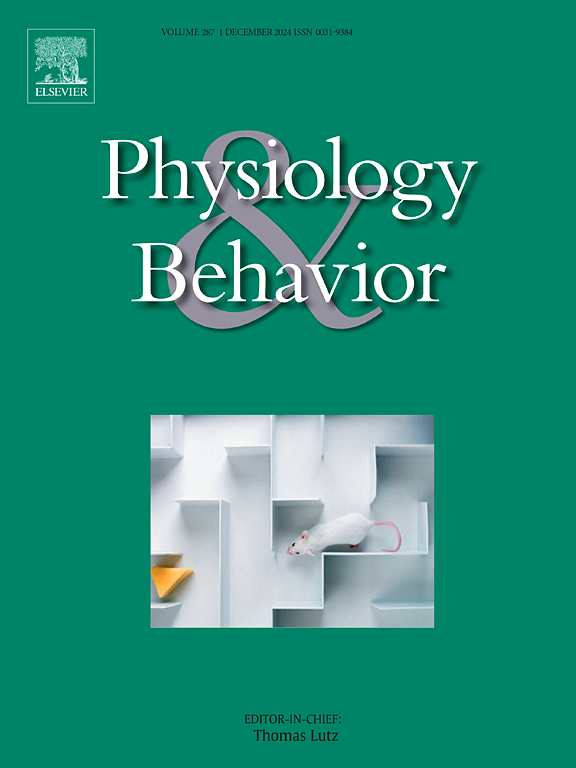老年人肠道微生物群的认知功能和饮食指数:关联和机器学习筛选模型。
IF 2.5
3区 医学
Q2 BEHAVIORAL SCIENCES
引用次数: 0
摘要
背景:全球人口老龄化的加速加剧了认知障碍,这是一个重大的公共卫生挑战。新出现的证据表明,肠道微生物群通过肠-脑轴参与认知调节,而饮食是一个关键的可改变因素。肠道微生物群膳食指数(DI-GM)量化了饮食与微生物群的相互作用,但其与认知的联系仍未被探索。本研究探讨老年人di - gm与认知的关系,并评估其对认知障碍的预测价值。方法:对2011-2014年NHANES中2168名老年参与者的数据进行分析。使用线性回归和平滑曲线拟合评估DI-GM与认知功能之间的关系。通过敏感性和亚组分析评估结果的稳健性和异质性。采用三种机器学习算法(XGBoost、AdaBoost、Random Forest)建立了认知障碍筛查模型,并通过SHAP分析确定了最优模型的关键相关特征。结果:经全协变量调整后,较高的DI-GM评分与较好的认知功能(β = 1.25,95% CI: 0.62-1.88, p = 0.0001)和较低的认知障碍概率(OR = 0.91,95% CI: 0.84-0.99, p = 0.023)显著相关。亚组分析证实了人群之间的一致性,婚姻状况具有调节作用。XGBoost预测效果最佳(AUC = 0.87);SHAP分析确定年龄、糖尿病和DI-GM是主要的相关特征。结论:DI-GM与认知功能呈正相关,与认知功能受损概率呈负相关,提示针对肠道菌群的饮食可能支持认知保护。关键的相关特征(年龄、糖尿病、DI-GM)突出了饮食优化和慢性病管理对老年人群认知健康的重要性。本文章由计算机程序翻译,如有差异,请以英文原文为准。
Cognitive function and dietary index for gut microbiota in the aging population: association and machine learning screening models
Background
Accelerated global population aging has heightened cognitive impairment as a critical public health challenge. Emerging evidence implicates gut microbiota in cognitive regulation via the gut-brain axis, with diet being a key modifiable factor. The Dietary Index for Gut Microbiota (DI-GM) quantifies diet-microbiota interactions, but its link to cognition remains unexplored. This study investigated the DI-GM-cognition relationship in older adults and evaluated its predictive value for cognitive impairment.
Methods
Data from 2168 older participants in the 2011–2014 NHANES were analyzed. The association between DI-GM and cognitive function was assessed using linear regression with smoothed curve fitting. The robustness and heterogeneity of the results were evaluated through sensitivity and subgroup analyses. A cognitive impairment screening model was developed using three machine learning algorithms (XGBoost, AdaBoost, Random Forest), and key associated features in the optimal model were identified via SHAP analysis.
Results
After full covariate adjustment, higher DI-GM scores significantly correlated with better cognitive function (β = 1.25, 95 % CI: 0.62–1.88, p = 0.0001) and reduced cognitive impairment probability (OR = 0.91, 95 % CI: 0.84–0.99, p = 0.023). Subgroup analyses confirmed consistency across populations, with marital status moderating effects. XGBoost achieved optimal prediction (AUC = 0.87); SHAP analysis identified age, diabetes, and DI-GM as key associated features.
Conclusion
DI-GM positively associates with cognitive function and negatively with impairment probability, suggesting diet targeting gut microbiota may support cognitive protection. Key associated features (age, diabetes, DI-GM) highlight the importance of dietary optimization and chronic disease management for cognitive health in aging populations.
求助全文
通过发布文献求助,成功后即可免费获取论文全文。
去求助
来源期刊

Physiology & Behavior
医学-行为科学
CiteScore
5.70
自引率
3.40%
发文量
274
审稿时长
47 days
期刊介绍:
Physiology & Behavior is aimed at the causal physiological mechanisms of behavior and its modulation by environmental factors. The journal invites original reports in the broad area of behavioral and cognitive neuroscience, in which at least one variable is physiological and the primary emphasis and theoretical context are behavioral. The range of subjects includes behavioral neuroendocrinology, psychoneuroimmunology, learning and memory, ingestion, social behavior, and studies related to the mechanisms of psychopathology. Contemporary reviews and theoretical articles are welcomed and the Editors invite such proposals from interested authors.
 求助内容:
求助内容: 应助结果提醒方式:
应助结果提醒方式:


